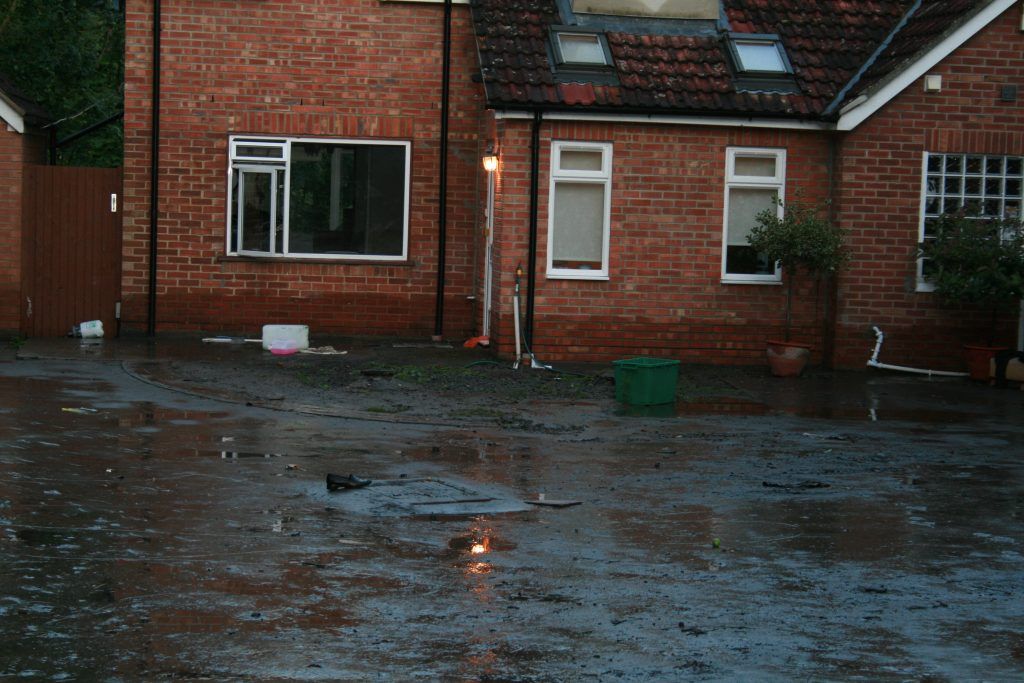
Water damage can severely impact a building’s structure, especially when it affects internal walls.
Whether from a burst pipe, flood, or leak, drying out affected walls promptly is essential to prevent further deterioration.
Below, we explain the key steps to follow once water damage has occurred and how to ensure your property recovers quickly and effectively.
Step 1: Address the Source of the Water
Before drying can begin, it’s vital to stop water from continuing to enter the property.
Leaks, flooding, or plumbing faults should be resolved as a priority.
Regularly inspect vulnerable areas such as attics, basements, and crawl spaces for signs of moisture or leaks.
Ensuring you have proper drainage systems is also crucial. Poor drainage can cause long-term structural problems, particularly to a building’s foundations.
Gutters should be inspected routinely, and roof inspections carried out every few years by a qualified professional to catch issues early.
Step 2: Remove Any Standing Water
Once the source of the problem has been controlled, the next step is to remove as much sitting water as possible.
A wet/dry vacuum may be sufficient in minor cases. However, a sump pump is often required for more significant flooding.
These pumps are typically installed at the lowest point of a basement or crawl space and activate automatically when water reaches a certain level.
If your building is in an area prone to flooding or has experienced significant water ingress in the past, installing a sump pump is strongly advised.
It acts as your first line of defence against water damage.
Regular testing ensures it’s functioning correctly when needed.
Step 3: Drying the Walls
Once excess water has been extracted, drying the walls is the next critical step.
Use a combination of fans and dehumidifiers to speed up the process.
Position fans at the base of the wall, pointing inward, and place dehumidifiers on the floor around a foot from the wall. If industrial-strength fans are available, they can accelerate drying further.
These can often be rented from local hardware stores.
It’s important to note that walls may take some time to dry completely, depending on the level of saturation and the type of materials affected.
Step 4: Repair Damage Promptly
After drying, assess the extent of the damage.
You may need to carry out repairs such as sealing cracks or replacing damaged materials. If cracks have appeared in the foundation, these should be sealed with hydraulic cement as soon as possible to prevent further water ingress.
Water damage can worsen over time if left untreated, so repairs should be completed as soon as practically possible.
Take Preventative Action
Ongoing maintenance is key to preventing future water damage. Check for leaks regularly, especially in areas susceptible to moisture.
Ensure your drainage systems are clear and functioning, and that your sump pump is in working condition.
Small leaks may not seem urgent, but they can cause severe damage if ignored. Acting quickly helps to avoid more costly repairs down the line.
Need Expert Help?
We understand that drying out walls and managing water damage isn’t always straightforward.
If you have questions or require professional assistance, our nationwide team is here 24/7.
Vinci Response provides water damage cleanup and restoration services across the UK.
Whether you’re dealing with minor leaks or extensive flooding, we’re here to help restore your property safely and effectively.
Contact us today for expert advice and a free quote.
FAQs – Drying Out Walls After Water Damage
Start by identifying and stopping the source of the water. Once any sitting water has been removed using a wet/dry vacuum or sump pump, use fans and dehumidifiers to dry the walls. Point fans at the base of the wall and place dehumidifiers nearby to speed up moisture removal.
You can use standard fans and dehumidifiers, but industrial-strength models will dry walls more effectively. These can often be hired from hardware stores. If there’s significant water damage, professional help may be needed.
Drying time depends on how much water was absorbed and the wall material. It may take several days. Ensure the wall is completely dry before beginning repairs.
No. Water damage gets worse over time. The sooner you deal with leaks and drying, the less damage you’ll face later. Small problems like cracks can lead to major structural issues if ignored.
Inspect your gutters, roofing, and drainage regularly. Also, ensure your sump pump is in good working condition. If you’re in a high-risk area or have had flooding before, installing a sump pump is strongly advised.